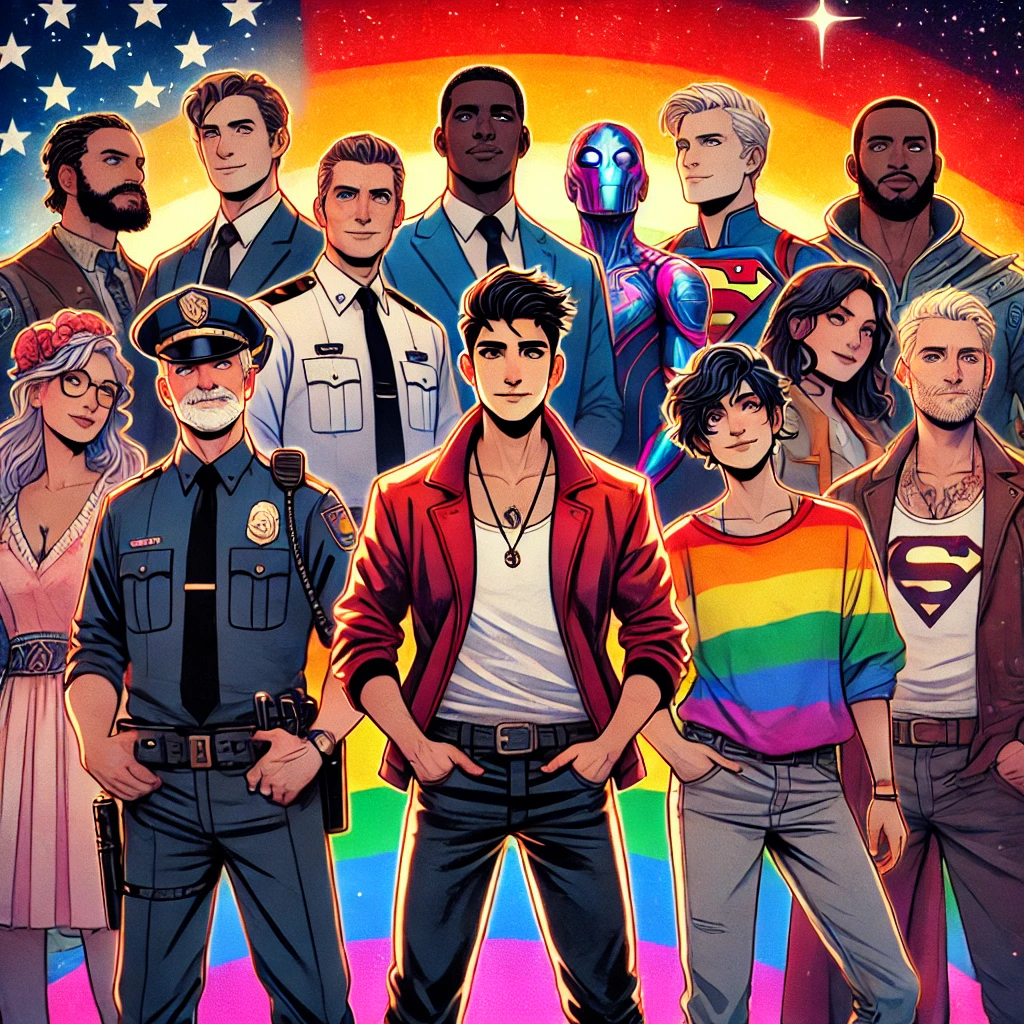Representation in media is crucial for fostering understanding and inclusivity. Over the years, numerous LGBTQ+ characters have made their mark in fiction, becoming icons for their communities and beyond. Here’s a look at ten of the most popular LGBTQ+ fictional characters who have inspired fans around the world.
1. Eric Effiong (Sex Education)
Eric, portrayed by Ncuti Gatwa, is a fan-favorite character known for his unapologetic personality and vibrant fashion sense. His journey explores themes of self-acceptance, love, and navigating friendships as a young gay man of African descent.
2. Rue Bennett (Euphoria)
Played by Zendaya, Rue is a complex and flawed teenager grappling with addiction. Her queerness is an integral part of her identity, and her romantic relationship with Jules adds depth and nuance to her story.
3. Captain Holt (Brooklyn Nine-Nine)
As the no-nonsense captain of the 99th precinct, Raymond Holt (Andre Braugher) breaks stereotypes as an openly gay Black man in a position of authority. His dry humor and unwavering integrity make him a beloved character.
4. Nico di Angelo (Percy Jackson & The Olympians)
Nico is a son of Hades and one of the first openly gay characters in Rick Riordan’s mythology-inspired series. His journey of self-discovery and coming out is both heartwarming and empowering for young readers.
5. Willow Rosenberg (Buffy the Vampire Slayer)
Willow’s evolution from shy computer nerd to a powerful witch includes her realization of her sexuality. Her relationship with Tara was one of the first positive portrayals of a lesbian couple on television.
6. Klaus Hargreeves (The Umbrella Academy)
Klaus, played by Robert Sheehan, is a fan-favorite for his chaotic energy and emotional depth. As a queer character, his struggles and triumphs add richness to the ensemble cast.
7. Omar Shanaa (Elite)
Omar is a central character in Netflix’s Elite, whose romantic relationship with Ander explores themes of cultural identity, family expectations, and acceptance as a gay Muslim.
8. David Rose (Schitt’s Creek)
David, portrayed by Dan Levy, is a pansexual character who defies stereotypes and exudes charm. His love story with Patrick is celebrated as one of the most heartwarming and authentic queer romances in TV history.
9. Harley Quinn (DC Universe)
Harley Quinn’s bisexuality is prominently featured in her recent iterations, especially her romantic relationship with Poison Ivy. This evolution highlights her complexity beyond her association with the Joker.
10. Lito Rodriguez (Sense8)
Lito is a gay actor navigating life in a world that often demands he hide his true self. His storyline in Sense8 is a powerful exploration of love, acceptance, and the importance of living authentically.
Why Representation Matters
Each of these characters contributes to normalizing LGBTQ+ identities in mainstream media. They provide representation for individuals who may not see themselves reflected in traditional narratives, offering stories of love, struggle, and triumph that resonate universally.
FAQs About LGBTQ+ Characters in Fiction
Q1: Why is LGBTQ+ representation important in media?
A: Representation fosters understanding, reduces stigma, and provides validation for LGBTQ+ individuals.
Q2: Are there LGBTQ+ characters in children’s media?
A: Yes, shows like Steven Universe and She-Ra and the Princesses of Power include LGBTQ+ characters, promoting inclusivity for younger audiences.
Q3: Which LGBTQ+ character broke significant barriers?
A: Willow Rosenberg (Buffy the Vampire Slayer) is often credited with being one of the first positive portrayals of a lesbian character in mainstream TV.
Q4: Are there more LGBTQ+ characters in media now compared to the past?
A: Yes, there has been a significant increase in LGBTQ+ representation, reflecting societal progress and growing advocacy for diversity.
Q5: Who decides the sexual orientation of fictional characters?
A: Typically, a character’s sexual orientation is determined by the creators and writers, though fan interpretations can also influence perceptions.
These characters remind us of the power of storytelling in creating a more inclusive world. By celebrating diversity, they pave the way for a future where everyone’s story is heard and valued.
